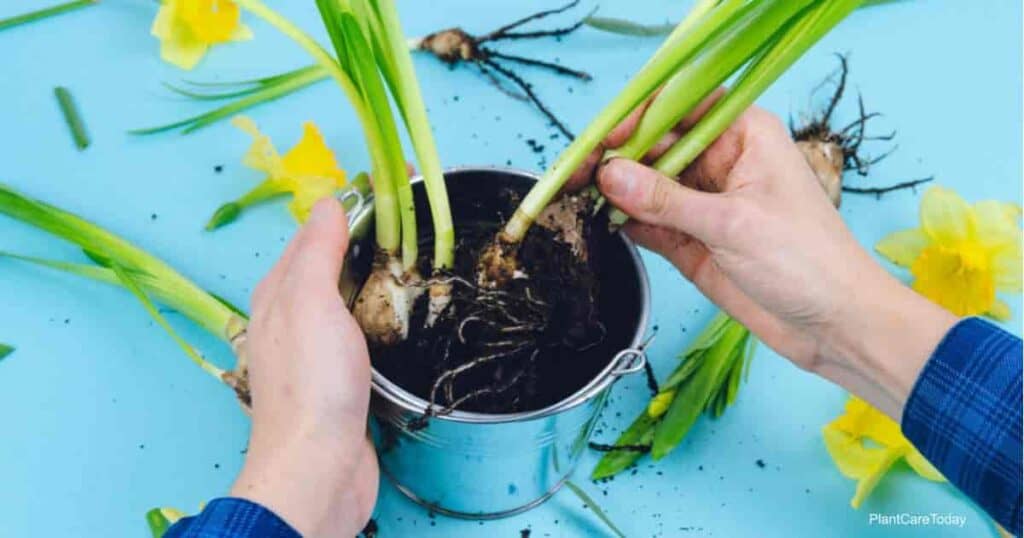How do you transplant forced or container daffodils into your garden after they have bloomed?
Are daffodils that have bloomed indoors in winter spent, or can you successfully transplant them into your garden?

The short answer is, yes, you can transplant them. The longer answer is that these blooming houseplants will need some special care to ensure they transition successfully.
This article outlines the steps you must take to transplant container-grown daffodils into your garden.
Why Are Forced Daffodil Bulbs Delicate?
When you force bulbs to grow and bloom indoors during the winter, they effectively use all their energy.
For this reason, many people toss these bulbs after they finish blooming.
It doesn’t have to be this way, though. With patience, your forced daffodil bulbs can have a new lease on life and begin blooming outdoors within a few seasons.
You may shorten that time to only one season with a bit of extra care.
Follow These 10 Simple Steps:
1. When your indoor container daffodils finish blooming, deadhead them. Doing so will save the plant some energy.
2. Place the container in an area that gets plenty of bright, indirect sunlight and stays at a moderate temperature. Avoid hot and cold extremes.
3. Water in moderation so that the soil stays slightly moist, and never soggy. You want the leaves to remain green so that they can continue to perform photosynthesis and deliver energy to the bulbs.
4. Eventually, the leaves will naturally die back, wither, and fall. Stop watering and allow this to happen.
When the foliage has died back, remove the bulbs from the container. Allow them to dry a bit, wrap them lightly and individually in a newspaper, and place them into a paper bag.
5. Store the bag in a cool, dark place until planting time. Note that if it is already warm enough to plant your bulbs in your garden, you should do so.
6. Take great care to choose a location and prepare the soil well to provide your bulbs with ample food (energy) to grow and thrive. Begin by selecting a spot that receives at least 6 hours of direct sunlight daily.
7. Dig a hole 10” deep. Mix a bit of garden fertilizer with sand and incorporate this into the soil in the planting hole. This mixture should raise the depth of the hole to about 9”.
8. Put an inch of garden soil over the fertilizer and sand mixture. Be careful not to let pure fertilizer touch the bulbs as this will cause fertilizer burn.
9. Plant your daffodil bulbs at a depth of about 8”. Cover the newly planted daffodils with about an inch of mulch to help conserve moisture.
10. Keep your newly planted daffodil bulbs well-watered, but not excessively. The soil should always be slightly moist, never soggy.
What If My Container Daffodil Bulbs Don’t Bloom In The Garden?
If they grow but your daffodils don’t bloom in the first year, don’t worry. Be patient.
Continue to care for them as you would any daffodil bulbs.
Give them a dose of fertilizer in the autumn and cover them with mulch to protect them during the winter.
Your container daffodil bulbs should rally and bloom within two or three seasons with the right location, proper nourishment, and water.
